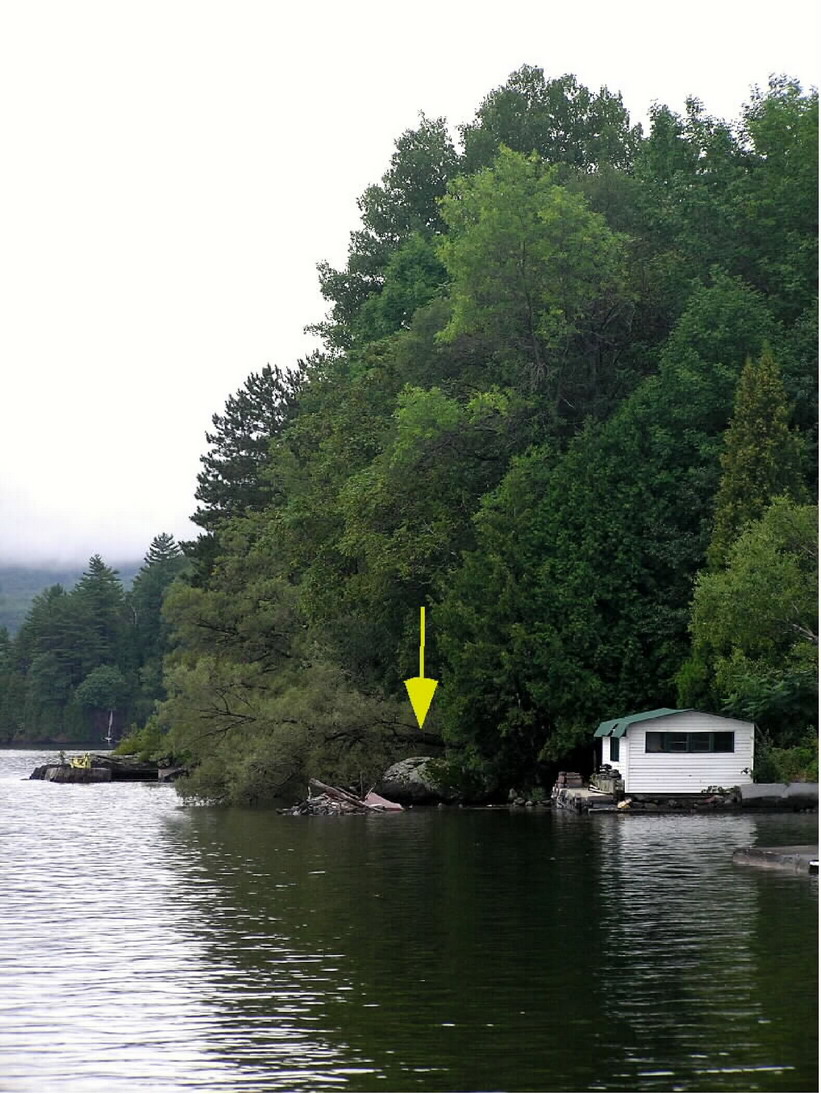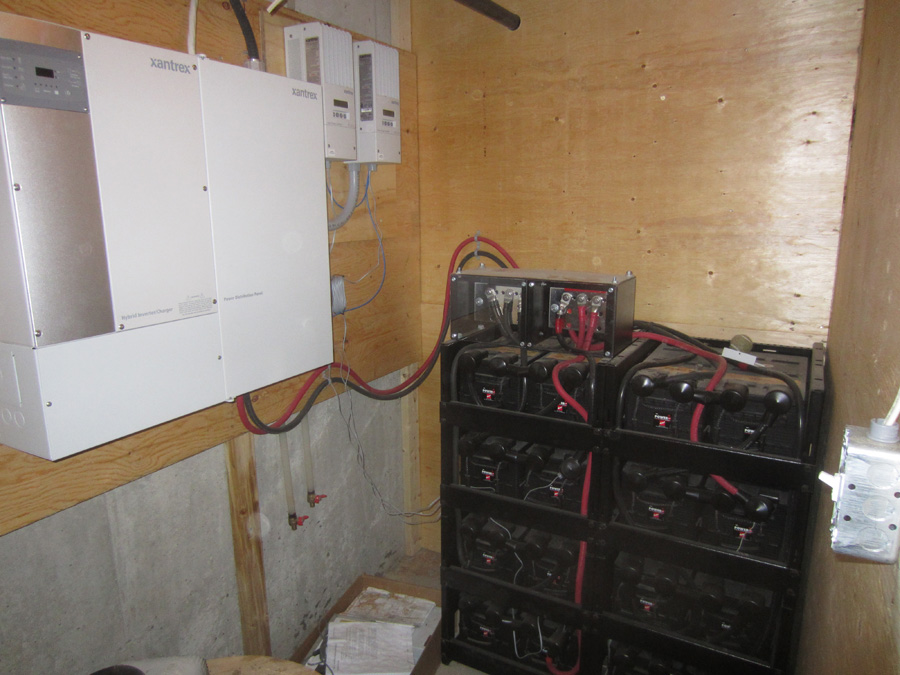A sustaining pillar of Solarhurst is the generation of its own electrical power. The site might accomodate a wind turbine but as yet no site-specific wind data is available and it seems unlikely that a suitable location could be found on the property given the forested nature of the lot . We therefore have decided to supply our energy requirements through photovoltaics. Specifically we have purchased from Matrx Energy of Montreal a hybrid solar system, that will have 3.1 kW nominal maximum output, that is both grid tied and has a 800 amp-hour battery backup.
Based on solar insolation maps from Canada, on average with 3.1 kW system, we should have for our area a generating capacity of between 3080 to 3640 kW-hr over a year. Another way of calculating solar capacity is on the basis of module area. Using U.S. data for northern New England, and assuming each module is 1.3m2 (giving a total system size of 23.4m2), then a minimum yearly power generation would be 4440 kW-hr , and a maximum would be 4500 kW-hr (using a 13% conversion efficiency). In either case, the assumption made is that the sun has full access (never shaded) to the panels. Unfortunately this will not be our situation.
We have decided to place ten 175W panels on our roof (about the maximum we can effectively place there), and put an additional array of eight 175W panels in a tracking mount by the lakeshore. Because of partial shading, the panels on the roof will only generate a fraction of the energy of the smaller lakeshore array. The roof array will do good service during the summer from late morning to early afternoon, but will be almost ineffective in the winter. As illustrated in the diagram below, even minor shading plays havoc with photovoltaic panels. Partial-shading even one cell of a 36-cell module will reduce its power output. Because all cells are connected in a series string, the weakest cell will bring the others down to its reduced power level. Therefore, whether ½ of one cell is shaded, or ½ a row of cells is shaded as shown below, the power decrease will be the same and proportional to the percentage of area shaded, in this case 50%.

Examples of partial cell shading that will reduce a solar electric panel’s power by 50%.
When a full cell is shaded, it can act as a consumer of energy produced by the remainder of the cells, and trigger the module to protect itself. The module will route the power around that series string. If even one full cell in a series string is shaded, it will likely cause the module to reduce its power level to ½ of its full available value. If a row of cells at the bottom of a module is fully shaded, as seen in the figure above, the power output may drop to zero. The best way to avoid a drop in output power is to avoid shading whenever possible, however with our roof array, shading by trees to the south of the house makes this impossible. We will be very reliant on the shoreline array.
The shoreline tracking array represents the opposite reality. It is almost ideal in terms of maximizing energy output from a minimal array size. Firstly the shoreline is oriented east-west, which allows the array to track the sun almost continuously from sunrise to sunset. Secondly it can be bolted onto a very large glacial erratic granite boulder that forms a permanent part of the shoreline. The boulder is just in front of the trees and the mounting post for the array will not disturb a single blade of vegetation, or any part of the littoral zone.. The installation requires but 4 anchor bolts. The shoreline position means that the array will gain even further solar insolation from reflection off of the water, and particularly during the winter with reflections off of the ice/snow.

Large glacial erratic on shoreline. Site to mount tracking array with zero disturbance to shoreline vegetation. Boathouse is on neighbour’s property.
Taking all of this information into account we anticipate that the system will be able to deliver the following power.
| December daily average | 2882 Watt-hours |
| June daily average | 5240 Watt-hours |
| Yearly daily average | (5240+2882)/2 = 4061 Watt hours |
| Yearly power output | 4061*365 = 1482 kilowatt-hours |
To put this in perspective, on average our power output would allow us to run 9 compact fluorescent bulbs (13 watts each) in the winter (24 hours a day) and 17 such bulbs in the summer.

Control centre and battery bank for solar electricity
Finally we may consider installing a small microhydro unit to take advantage of heavy rains that may overwhelm the upper bulk water cistern (see Water). Use of microhydro during long rainy periods would offset the minimal solar energy generated during these times. It is however an expensive installation for only occasional use.
